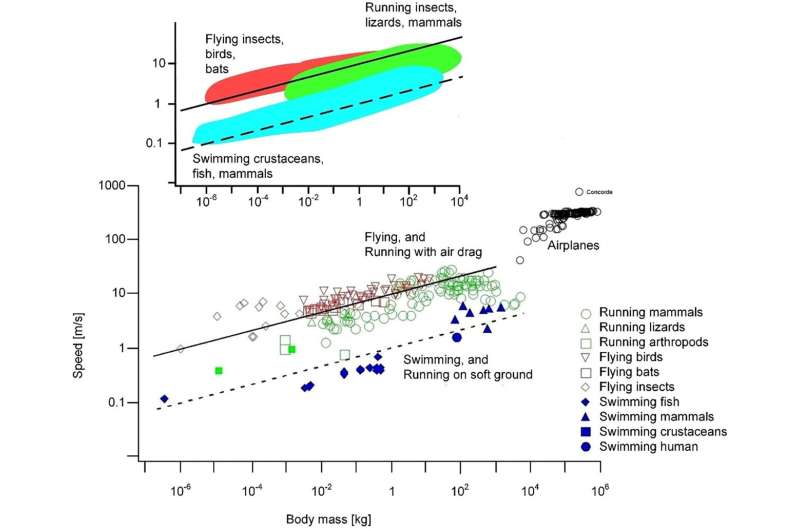This article has been reviewed according to Science X's editorial process and policies. Editors have highlighted the following attributes while ensuring the content's credibility:
fact-checked
peer-reviewed publication
trusted source
proofread
Research demonstrates the power of rhythm as a design element in evolution and robotics

As the internet quickly fills with viral videos of futuristic robots darting and racing around like the animals they're built to mimic, Duke researchers say that there's an element of their movement's programming that should not be overlooked: rhythm.
When analyzing legs, wings and fins for moving robots or animals in the real world, the mathematics looks fairly straightforward. Limbs with multiple sections of various lengths create different ratios for leverage, bodies with alternate shapes and sizes create drag coefficients and centers of mass, and feet, wings or fins of various shapes and sizes push on the world around them.
All of these options create more degrees of freedom in the final design. But until now, say the researchers, nobody was paying much attention to the timing of how they're all working together.
"Minimizing the amount of work being done by varying the speed over the mover is an idea that's been around a long time," said Adrian Bejan, the J.A. Jones Distinguished Professor of Mechanical Engineering at Duke. "But varying the rhythm of that movement—the music of how the pieces move together over time—is a design aspect that has been overlooked, even though it can improve performance."
The reasoning and mathematics exploring this thesis was published in Scientific Reports.
To illustrate his point in the paper, Bejan points to natural swimmers such as frogs or humans doing the breaststroke. Their swim gate is characterized by three time-intervals: a slow period of reaching forward, a fast period of pushing backward and a static period of coasting. For optimum performance, the lengths of time for those intervals typically go long, fast, long. But in certain situations—outracing or outmaneuvering a predator, for example—the ratios of those periods change drastically.
In the design of robots built to emulate dogs, fish or birds, incorporating different rhythms into their standard cruising movements can make their normal operations more efficient. And those optimal rhythms will, in turn, affect the choices made for all of the other pieces of the overall design.
The work builds on research Bejan published nearly 20 years ago, where he demonstrated that size and speed go hand-in-hand across the entire animal kingdom whether on land, in the air or under water. The physics underlying that work dealt with weight falling forward from a given animal's height over and over again. In this paper, Bejan shows that his previous work was incomplete, and that all animals, robots and other moving things can further optimize their mechanics by adding an element of rhythm.
"You can—and indeed you should—teach rhythms of movements to competitive swimmers and runners looking for an edge," Bejan said. "Rhythm increases the number of knobs you can turn when trying to move through the world. It is yet another example of how good design—whether made by humans or through natural evolution—is truly a form of art."
More information: A. Bejan et al, Locomotion rhythm makes power and speed, Scientific Reports (2023). DOI: 10.1038/s41598-023-41023-6
Journal information: Scientific Reports
Provided by Duke University





















